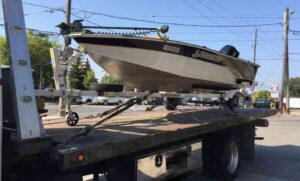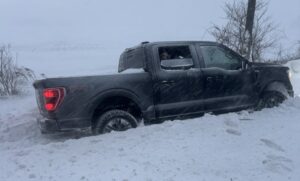Encountering a flat tire on the road can instantly turn a smooth journey into a stressful ordeal. Whether you’re commuting through Aurora’s busy streets or navigating the scenic, less-traveled routes of rural Ontario, knowing how to change a tire is a fundamental skill that can save you time, money, and a great deal of frustration. While professional roadside assistance services like Pars Towing are always ready to lend a hand, empowering yourself with this knowledge is invaluable.
This comprehensive, step-by-step guide will walk you through the entire process of how to change a tire safely and efficiently. We’ll cover everything from essential tools and preparation to the actual tire swap and crucial post-change checks, ensuring you’re well-equipped to handle this common roadside emergency in 2025 and beyond.
- Learn More >>>How To Change A Flat Chevy Tire
1. Preparation is Key: Gather Your Tools and Prioritize Safety
Before you even think about loosening a lug nut, proper preparation is paramount. Rushing into a tire change without the right tools or in an unsafe environment can lead to injury, vehicle damage, or further complications.1
1.1. Essential Tools You’ll Need
Most vehicles come equipped with a basic tire change kit. Ensure yours is complete and accessible, usually found in the trunk under the cargo floor or sometimes mounted externally under the vehicle.
- Spare Tire: Crucially, a properly inflated and serviceable spare tire. By 2025, many vehicles use compact “donut” spares, while some have full-size spares, and others may rely on run-flat tires or a tire repair kit instead of a spare.2 Know what your vehicle has!
- “Donut” Spare (Temporary Use): Smaller and lighter than a full-size tire. Crucial limitations: Typically rated for limited speed (e.g., 80 km/h or 50 mph) and limited distance (e.g., 80-110 km or 50-70 miles). They are strictly for temporary use to get you to a repair shop. Do NOT exceed speed/distance limits.
- Full-Size Spare: Identical to your regular tires, offering full performance. Less common due to space and weight.
- Run-Flat Tires: Designed to be driven on even when punctured for a limited distance at reduced speed, often eliminating the need for a spare. Check your owner’s manual for specific run-flat capabilities.
- Tire Repair Kit: Some vehicles come with a compressor and sealant. These are for small punctures only and are not effective for sidewall damage or blowouts.
- Jack: To lift the vehicle off the ground.
- Scissor Jack: Most common type included with vehicles. Operated by cranking a handle. Lightweight and compact.
- Bottle Jack: More powerful hydraulic jack, typically found with larger vehicles (trucks, SUVs).
- Trolley Jack (Floor Jack): More stable and easier to use, but usually too large to carry in a car.
- Lug Wrench: To loosen and tighten the lug nuts that hold the wheel on. May be L-shaped, X-shaped (spider wrench), or telescopic.
- Owner’s Manual: Absolutely vital. It contains specific instructions for your vehicle’s jacking points, lug nut torque specifications, and spare tire information.
- Wheel Chocks: To prevent the vehicle from rolling when lifted.3 If you don’t have dedicated chocks, a sturdy brick or a large piece of wood can suffice.
- Flashlight/Headlamp: Essential for nighttime or low-light situations.
- Gloves: To protect your hands from dirt, grease, and sharp edges.4
- Small Board (Optional but Recommended): A sturdy piece of wood (e.g., 6×6 inch) can provide a more stable base for your jack, especially on soft ground.5
- Learn More >>>Flat Tire Change
1.2. Ensuring Your Safety: The Golden Rules
Your safety and the safety of others must be your top priority.
- Find a Safe Location: Pull over immediately to the safest possible location. Ideally, this is a flat, firm, level surface, well away from moving traffic. Avoid soft shoulders, hills, blind curves, or busy highways if at all possible.
- Engage Hazard Lights: Turn on your vehicle’s hazard warning lights (four-way flashers) to alert other drivers to your presence.6
- Parking Brake: Fully engage your vehicle’s parking brake (also known as the emergency brake or handbrake). For automatic transmissions, place the shifter in “Park” (P). For manual transmissions, put it in “Reverse” (R) or a low gear.
- Wheel Chocks: Place wheel chocks (or sturdy blocks) behind the wheels diagonally opposite to the tire you are changing. For example, if you’re changing the front-right tire, place chocks behind the rear-left wheel. If you’re changing a rear tire, place them in front of the front wheels. This prevents the car from rolling.
- Passengers Out: Have all passengers exit the vehicle and move to a safe location, well away from the roadside and the working area.
- Visibility: If it’s dark, use your flashlight/headlamp. Consider wearing a reflective vest or placing safety triangles behind your vehicle (if you have them).
2. The Step-by-Step Process: How to Change a Tire
Once you’ve safely prepared, you’re ready to begin the actual tire change.
Step 1: Access Your Spare Tire and Tools
- Locate your spare tire, jack, and lug wrench. Refer to your owner’s manual for their exact location and how to retrieve them.
- If your spare tire is a “donut,” check its recommended PSI (tire pressure) which is usually much higher than your regular tires (e.g., 60 PSI). If it’s low, you’ll need to inflate it using a portable compressor if you have one, or call for assistance.
- If your vehicle has hubcaps covering the lug nuts, use the flat end of your lug wrench or a screwdriver (as per your manual) to carefully pry it off. Place the hubcap and lug nuts (once removed) in a safe place, like the upturned hubcap, to prevent them from rolling away.
Step 2: Loosen the Lug Nuts (While the Car is Still on the Ground)
This is a critical step that many get wrong. It’s much safer to loosen lug nuts when the car’s weight is still on the wheel, preventing it from spinning.
- Fit the lug wrench onto one of the lug nuts.
- Turn the wrench counter-clockwise to loosen the lug nut. Lug nuts are often very tight. You may need to use significant force.
- Tip for Tight Nuts: If the lug nut won’t budge, try putting your foot on the end of the wrench handle and pressing down. Alternatively, you can kneel and use your body weight. Never jump on the wrench.
- Righty Tighty, Lefty Loosey: Remember, counter-clockwise to loosen.
- Only loosen them about a quarter to half a turn each. Do NOT remove them completely yet.
- Repeat for all lug nuts.

- Learn More >>>HOW TO JUMP START A NISSAN LEAF
Step 3: Position the Jack and Raise the Vehicle
- Locate the Jack Point: Consult your owner’s manual to find the exact jacking point for your vehicle. These are reinforced areas on the vehicle’s frame or chassis, typically near each wheel well. Using the wrong jack point can severely damage your vehicle’s undercarriage, suspension, or battery (especially in EVs).7
- Place the Jack: Position the jack squarely under the designated jack point. Ensure it’s on a firm, flat surface. If the ground is soft, place a small, sturdy board underneath the jack for stability.
- Raise the Vehicle: Slowly raise the vehicle using the jack, carefully turning the crank or pumping the handle.
- Crucial Safety: Ensure the jack remains stable as the car lifts. Watch for any wobbling or shifting.
- Raise the vehicle just enough so that the flat tire is fully off the ground, with a few inches of clearance to easily slide the spare tire on.
Step 4: Remove the Lug Nuts and Flat Tire
- Once the flat tire is completely off the ground and stable on the jack, you can now fully remove the lug nuts.8 Turn them counter-clockwise until they come off. Keep them together in a safe place (e.g., the hubcap).
- Grip the flat tire firmly, usually at the 3 and 9 o’clock positions. Wiggle it gently if needed, and pull it straight off the wheel studs.
- Place the flat tire on the ground, away from your working area, ideally under the vehicle’s frame near the jack as an extra safety measure (if there’s space), but ensure it doesn’t obstruct the new tire’s installation.
Step 5: Install the Spare Tire
- Carefully lift the spare tire and align it with the wheel studs (the threaded bolts sticking out from the hub).
- Push the spare tire firmly onto the wheel hub until it seats snugly against the braking rotor.
- Hand-tighten all the lug nuts onto the studs. Screw them on as far as you can by hand. Do NOT use the lug wrench to fully tighten them while the car is still elevated; this can cause the car to become unstable on the jack.
Step 6: Lower the Vehicle
- Slowly and carefully lower the vehicle using the jack, allowing the spare tire to make full contact with the ground.9
- Once the full weight of the vehicle is on the spare tire, remove the jack completely.
Step 7: Fully Tighten the Lug Nuts
This is the final tightening stage and is critical for safety.
- Using the lug wrench, tighten each lug nut as much as you can.
- Tighten in a Star or Criss-Cross Pattern: This is extremely important for even pressure distribution, which helps seat the wheel properly and prevents the wheel from warping or coming loose.10 Do not tighten them sequentially in a circle. Tighten one nut, then the one directly opposite it, then the one perpendicular to that, and so on.
- Apply significant force, but do not over-tighten (which can strip the studs or damage the wheel). If you have a torque wrench, consult your owner’s manual for the specific torque specification.
Step 8: Final Checks and Post-Change Procedures
- Gather Tools: Collect all your tools and the flat tire.11 Securely store them in your vehicle. If the flat is a full-size tire, it might not fit back in the spare tire well. Secure it in your trunk or back seat to prevent it from moving during transit.
- Check Spare Tire Pressure (Again): If you haven’t already, confirm the pressure in your newly installed spare tire. Donut spares often require very high pressure.12
- TPMS Reset (If Applicable): If your vehicle has a Tire Pressure Monitoring System (TPMS), the warning light might come on or remain on after a tire change, especially if you replaced a full-size tire with a “donut.”13
- Some systems auto-reset after driving a certain distance at a specific speed (e.g., 10-15 minutes above 40 km/h).
- Others require a manual reset via a button on the dashboard or through the infotainment system (consult your manual).
- If the light persists, a professional service might be needed to recalibrate the sensors, especially for direct TPMS systems.
- Drive Cautiously: Remember the limitations of a spare tire (especially a donut). Drive at reduced speeds, avoid sudden braking or sharp turns, and head directly to a tire repair shop.
- Professional Inspection: Immediately after changing your tire, drive to a reputable tire shop or mechanic (like those Pars Towing recommends or transports to) to have your full-size tire repaired or replaced. Also, have the lug nuts on the newly installed spare checked with a torque wrench to ensure they are properly tightened to factory specifications. This “re-torque” after driving a short distance (e.g., 50-100 km) is recommended even after professional tire shops install tires.
- Learn More >>>Making Car Jump Starter PowerBank

6. When to Call Pars Towing: Your Reliable Partner in Aurora & Ontario
Knowing how to change a tire is a crucial skill, but there are many situations where calling Pars Towing is the safer, more efficient, and often necessary choice for drivers in Aurora and across Ontario.
- Unsafe Location: If you’re on a busy highway shoulder, a blind curve, an unlit road at night, or any location where changing a tire would put you or your vehicle at risk.
- Missing or Damaged Tools: If your vehicle’s jack, lug wrench, or spare tire is missing, damaged, or unusable.
- No Spare Tire: Many newer vehicles, especially luxury cars, performance models, and some EVs, do not come with a spare.14 They may have run-flat tires or a tire repair kit for small punctures. If you have a blowout or significant sidewall damage, you’ll need a tow.
- Damaged Lug Nuts/Stuck Wheel: If lug nuts are seized, stripped, or the wheel is rusted onto the hub.
- Physical Limitations or Discomfort: If you’re not physically able to perform the task, or if you simply don’t feel comfortable doing it yourself.
- Severe Tire Damage: If the tire has suffered a major blowout or extensive damage that cannot be safely driven on, even a short distance.
- Unusual Wheels/Locking Nuts: Some vehicles have unique wheel designs or locking lug nuts that require special adapters, which can be lost or misplaced.15
- Weather Conditions: Changing a tire in heavy rain, snow, or extreme cold can be dangerous and incredibly difficult.16
- Any Doubt or Uncertainty: If you have any hesitation or uncertainty about any step of the process, it’s always best to call a professional.
Pars Towing is equipped with the right tools, experienced technicians, and the local knowledge to handle your tire change or tow your vehicle safely to the nearest repair facility in Aurora or anywhere in Ontario, 24/7. We ensure your safety and the integrity of your vehicle, providing peace of mind when you need it most.
- Learn More >>>How do I get a tow truck?
Conclusion
A flat tire is an unfortunate but common occurrence for drivers. Knowing how to change a tire is a vital skill that can empower you to handle minor roadside emergencies independently. By understanding the necessary tools, prioritizing safety at every step, and meticulously following the procedure outlined in your owner’s manual, you can successfully replace a flat tire with a spare.
However, recognizing your limitations and understanding when professional assistance is warranted is equally important. For challenging situations, unsafe locations, or simply when you prefer expert help, Pars Towing is your reliable partner in Aurora and throughout Ontario. We are always ready to provide prompt, safe, and efficient roadside assistance, ensuring you and your vehicle get back on the road or to a repair shop with minimal fuss. Drive confidently, knowing you have the knowledge and the support system to handle whatever the road throws your way.








